Exploring Boston's Classical Radio Landscape


Intro
The classical radio landscape in Boston is unique, reflecting the city's rich cultural history and its ongoing dedication to classical music. For connoisseurs of the genre, this might represent not just valuable broadcasting but also a space where the past and present meet. In exploring this realm, we can learn about significant radio stations, their programming strategies, and how they adapt to an evolving musical environment. Moreover, this examination will touch on the digital transformation affecting listener habits and the challenges posed by competitive music platforms.
The importance of classical radio is not merely in its transmission of music, but in its role as a cultural touchstone, a community for music enthusiasts, and a platform that educates listeners about the depth and variety of classical works.
From understanding its historical roots to analyzing its current relevance, we embark on a journey, one that aims to highlight how classical radio fuses artistry with public engagement.
Historical Context
To appreciate contemporary classical radio in Boston, one must reflect on its historical foundations. Classical music has enjoyed a long-standing tradition in the city since the early 20th century. Institutions like the Boston Symphony Orchestra have significantly influenced the radio's development.
- Early Beginnings:
Boston was home to one of the first classical radio broadcasts in the U.S. This legacy contributes to a strong foundation that continues today. - Key Developments:
Over the decades, various stations have emerged, each adding to the landscape by providing innovative programming that caters to diverse audiences.
Key Players
In any discussion of Boston’s classical radio, prominent stations like WBUR and WCRB cannot be overlooked. These organizations have been instrumental in shaping how classical music reaches listeners.
- WBUR:
The station has a strong commitment to classical music, featuring both local and international talent. They also emphasize educational content, enriching listener knowledge about composers and compositions. - WCRB:
Known for its expansive selection, WCRB offers a range of programming from live performances to special features on composers, adeptly keeping audiences engaged.
Listening Experience
The experience of listening to classical radio in Boston is as much about the music as it is about the programming strategies employed by various stations. Each station has its tone and approach, affecting audience engagement.
- Live Broadcasts:
Many stations host live concerts and events, allowing listeners an immersive experience that connects them directly to the music. - Curated Playlists:
Particular emphasis on themed playlists can pique listener interest. This could include a focus on specific composers or musical epochs.
Digital Transformation
In recent years, the rise of digital platforms has drastically changed the classical radio landscape. Streaming services and digital music platforms like Spotify and Apple Music have reshaped how audiences consume music.
- Online Accessibility:
Traditional radio stations have responded by improving their online presence. This includes live streaming and on-demand content, expanding their reach beyond traditional radio waves. - Competition:
The challenge from these platforms means classical radio must innovate to retain listener loyalty. The transition has forced a re-evaluation of what classical programming looks like in this new context.
Challenges Ahead
Despite its rich history, classical radio in Boston faces various challenges that could impact its future. Cultural shifts towards more contemporary forms of music present hurdles that require adaptation.
- Audience Demographics:
As listener demographics change, stations must find ways to attract younger audiences while maintaining the core values that define classical music. - Sourcing Financial Support:
Fundraising and securing sponsorships remain crucial for operation, especially in a world increasingly dominated by free digital content.
"The future of classical radio in Boston depends not only on adapting to new technologies but also on understanding and meeting the interests of the community."
Historical Overview of Classical Radio in Boston
Understanding the historical context of classical radio in Boston is crucial for appreciating its evolution and significance in the contemporary music landscape. Over the decades, classical radio has served not only as an entertainment medium but also as an educational tool that fosters a deeper appreciation for the genre. This section provides insight into the beginnings of classical radio, the evolutionary developments it underwent, and key moments that shaped its presence in Boston.
Origins and Development
The roots of classical radio in Boston can be traced back to the early 20th century. Radio technology began to take shape, creating a new platform for artists and composers to reach wider audiences. The initial broadcasts featured live performances and recordings, helping to establish an audience for classical music. Public interest surged, leading to increased programming of classical content. This early commitment laid the groundwork for what would become a vibrant and enduring classical radio culture.
Local orchestras, choirs, and musicians leveraged radio broadcasts to promote their performances. The accessibility of such media enabled Boston residents to experience high-quality music without needing to attend concerts. The growth of classical radio in this era included collaborations with major institutions, enriching the community's cultural fabric.
Key Milestones
First broadcasts
The first broadcasts of classical music in Boston represented a significant leap in making this genre accessible to a wider audience. These early broadcasts featured local talents and renowned artists, which helped to create a sense of community. They also highlighted the importance of radio as a medium that could bring classical music into people's homes.
One key characteristic of these broadcasts was their live nature. This urgency and spontaneity contributed to their appeal and ensured that listeners felt a direct connection to the performance. The introduction of classical music programming marked a pivotal shift in public awareness and appreciation of the art form.
"Classical radio began as a means of connecting audiences with music, allowing them to explore a rich tapestry of sounds at their convenience."
Intro of FM transmission
The introduction of FM transmission represented another transformative moment for classical radio in Boston. FM allowed for better audio quality, reducing interference and improving the listening experience. This upgrade was vital for broadcasting more complex works, where subtleties in sound play a crucial role.
The key characteristic of FM transmission was its ability to provide a standard of clarity not previously available on AM stations. This advancement made FM a popular choice for classical radio, enhancing the listening experience and drawing in more dedicated audiences. FM stations began to emerge, specializing in classical programming and catering to an audience that craved quality and depth in their listening experiences.
Establishment of major stations
The establishment of major classical radio stations, such as WCRB and WBUR, marked a definitive change in the radio landscape within Boston. These stations became the backbone of classical music broadcasting, offering a structured approach to programming, curating selections that appealed to diverse tastes.
A distinct feature of these major stations is their community involvement. They not only broadcast programs but also sponsor local performances and engage with listeners through events. Such efforts have solidified their positions as cultural institutions in Boston, fostering a relationship with the audience that goes beyond simple broadcasting.
In summary, key milestones in the historical overview of classical radio in Boston reveal its evolution from humble beginnings to a well-established medium. This narrative reflects the impact of technological advancements and the role of prominent stations in shaping public engagement with classical music.
Prominent Classical Radio Stations in Boston
The classical radio landscape in Boston is marked by the presence of several prominent stations that play a crucial role in both music education and cultural enrichment. These stations provide a wide swath of classical music programming, showcasing both established and emerging artists. Understanding these key players helps paint a complete picture of how classical music continues to flourish in an age increasingly influenced by digital technology and changing listener preferences.
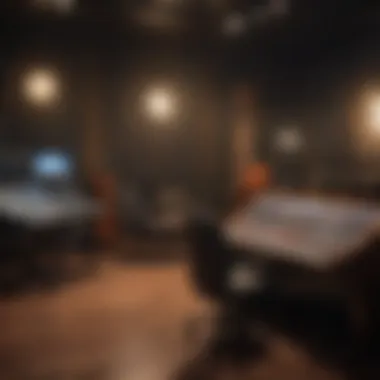

WCRB
WCRB is Boston's primary classical music station, known for its commitment to delivering quality programming. This station represents a vital aspect of the classical radio experience in Boston and showcases a range of musical styles from the traditional to the contemporary.
Programming focus
The programming focus of WCRB is set on providing a broad spectrum of classical music. From symphonies to chamber music, the station covers it all. This approach caters to a diverse audience, allowing both seasoned listeners and new fans to find something enjoyable. The station's commitment to producing high-quality content makes it an exemplary choice for those wanting to dive into classical music. Furthermore, WCRB often features notable performances by both local and international artists, thereby enriching its programming. The inclusion of various musical styles highlights the depth and variety available in classical music, making it a popular choice for listeners across different backgrounds.
Collaborations with local orchestras
WCRB actively collaborates with local orchestras, which significantly enhances its programming. These partnerships not only elevate the status of classical music in Boston but also provide firsthand access to live performances, engaging listeners in a unique way. By broadcasting concerts and special events, WCRB forms a vital link between the community and its artists. This strategy encourages community support and fosters a sense of connection among local music lovers. The chance to feature orchestras like the Boston Symphony Orchestra adds prestige to WCRB's programming, demonstrating its commitment to high-caliber musical experiences for listeners.
Community engagement initiatives
Community engagement initiatives by WCRB focus on cultivating local talent and creating opportunities for greater involvement. The station organizes various events, including listener meet-and-greets and educational workshops. These initiatives aim to bridge gaps between audiences and musicians by fostering a deeper appreciation of classical music. Developing initiatives that encourage interaction can benefit both artists and audience members, helping the local music scene thrive. WCRB's dedication to community outreach exemplifies how classical radio can go beyond mere broadcasting to encompass active participation and support for the arts.
WBUR
WBUR brings a unique perspective to classical radio with its integrated approach to news and music. The station not only focuses on classical music but weaves in relevant news coverage, providing a well-rounded listening experience that appeals to a broader audience.
Integration of news and classical music
The integration of news and classical music at WBUR offers listeners a distinctive blend that sets it apart. By interspersing music programming with news updates, WBUR keeps its audience informed while also providing moments of artistic appreciation. This synergy between classical music and journalism cultivates a deeper connection with listeners. Moreover, it enhances the station's relevance in an era when audiences often seek information alongside entertainment. This model allows WBUR to reach individuals who may not traditionally tune in to classical music, thereby expanding its influence and role within the community.
Unique programming approach
WBUR's unique programming approach combines various genres and formats, allowing for a more eclectic listening experience. The station may feature classical composers alongside contemporary discussions and interviews with artists. This varied format encourages listeners to explore classical music in a new light, reinforcing its place in modern society. By presenting music alongside discussions about its cultural context, WBUR successfully educates its audience while maintaining promotional efforts for classical music. The station’s flexibility can attract new listeners, making classical music more accessible and relatable.
Impact on audience perception
The impact of WBUR on audience perception of classical music is significant. By combining news with classical music, the station helps reshape how the genre is perceived by providing a modern frame of reference. This approach challenges preconceived notions that classical music is reserved for a specific demographic. Instead, WBUR promotes the idea that classical music is relevant to everyday life. This shift can encourage younger audiences to engage with classical music more openly, forming a new generation of listeners.
In sum, the prominent classical radio stations in Boston, such as WCRB and WBUR, contribute greatly to the classical music scene. They effectively engage audiences while addressing the challenges posed by contemporary cultural trends. The focus on community collaboration, diverse programming, and integration of music with news underlines the important roles these stations play in promoting and preserving classical music in Boston.
Classical Music Programming
Classical music programming serves a vital role in the Boston classical radio landscape. It shapes not just what listeners hear but also how they connect with the music and the culture surrounding it. This programming ranges from daily schedules to special features that enhance the audience's experience, making classical music more accessible and enjoyable.
Daily Schedules
Daily schedules are fundamental to the structure of classical radio. They allow listeners to anticipate their favorite shows and know when to tune in. Programs often include a mix of classical works, ranging from well-known composers like Bach and Beethoven to contemporary artists. The rhythm of the daily schedule also encourages routine listening, fostering a devoted audience.
Special Features and Series
Special features and series add depth to the classical radio experience in Boston. Such segments elevate the standard fare of classical music by providing unique insights and interactive elements.
Live performances
Live performances are an important aspect of classical music programming. They create an authentic connection between the artist and the audience, bringing a sense of immediacy that pre-recorded music cannot replicate. This real-time element can make performances feel fresh and engaging. The key characteristic of live performances is their spontaneous nature, often leading to unique renditions of well-loved pieces that can surprise even the most dedicated classical listeners.
One unique feature of live performances is the opportunity for audience interaction. This engagement can take the format of Q&A sessions, where listeners interact directly with musicians and conductors, providing insight into the creative process. However, one downside is the variable quality of sound compared to studio recordings, which might be off-putting for some listeners.
Thematic explorations
Thematic explorations offer an avenue for deeper understanding of classical music. They may focus on specific composers, styles, or historical periods, allowing listeners to appreciate the nuances within the genre. This approach is beneficial as it enriches the listener’s knowledge and appreciation of the music.
A unique feature of thematic explorations is their ability to connect diverse pieces through common threads, thereby showcasing the evolution of styles. For instance, a series may examine the influence of the Romantic era on modern compositions. This form of programming can often enhance listener engagement, inviting them to explore further. Nonetheless, thematic explorations may occasionally limit the diversity of music presented, which could alienate those preferring a broader selection of works.
Spotlighting local artists
Spotlighting local artists is yet another compelling aspect of classical programming. By featuring talent from Boston, radio stations can foster a sense of community and provide a platform for emerging musicians. The key characteristic of this approach is its focus on local culture, which resonates deeply with listeners who have a personal connection to the area.
A unique feature of spotlighting local artists is the emphasis on contemporary interpretations of classical pieces, which can bring fresh perspectives to traditional works. This inclusion not only benefits the artists by increasing their visibility but also enriches the listening experience for the audience. However, challenges may arise in balancing the focus on local talent with the need to present established classical repertoire, potentially leading to discrepancies in audience expectation.
The rich and varied programming in Boston’s classical radio enhances not only the depth of musical experience but also strengthens community ties.
In summary, classical music programming in Boston encompasses a blend of structure and creativity. The daily schedules, live performances, thematic explorations, and local artist spotlights all contribute to a multifaceted listenership. Such diversity allows for an engaging and comprehensive view of the classical music landscape.
Composition and Diversity of Audiences
Understanding the composition and diversity of audiences for classical radio stations in Boston is vital for assessing the health and vibrancy of this genre’s landscape. These elements provide insights into who is listening, why they tune in, and how stations can effectively engage with their listeners. A diverse audience not only enhances the cultural richness of classical music but also allows for a broader range of programming and outreach initiatives.
Demographics of Classical Music Listeners
Classical music has traditionally attracted an older demographic, often over the age of 50. However, this trend shows signs of change. Recent studies indicate a gradual increase in younger listeners, drawn in by streaming services and digital platforms that offer access to classical music. This shift prompts a need for stations to rethink their approach to programming and marketing. Understanding these demographics is crucial in tailoring content that resonates with various age groups.
Key characteristics of the audience include:
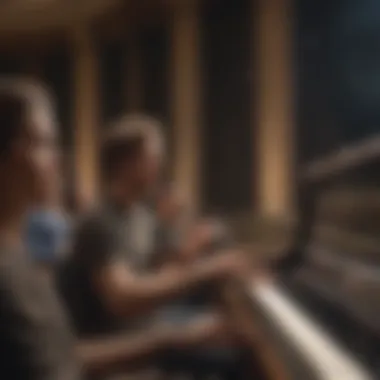
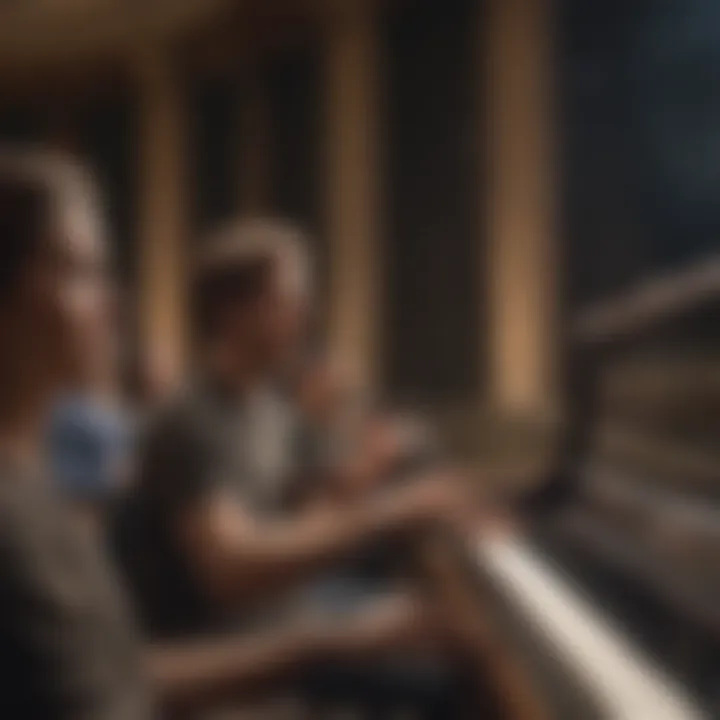
- Age diversity: Younger individuals are becoming more interested, mixed with loyal older fans.
- Educational backgrounds: Many listeners have higher educational achievements, influencing their tastes and listening habits.
- Cultural influences: The diversity of music education and experiences in the Boston area encourages an eclectic mix, impacting musical preferences.
This data enables radio stations to craft targeted messages and programming that can appeal to both traditional and new audiences.
Audience Engagement Strategies
Audience engagement is a key factor in the survival of classical radio. Stations tend to implement an array of strategies to connect with their listeners, ensuring they feel included and valued in the classical music community. Specific approaches include:
Listener surveys
Listener surveys are an effective method of gauging public interest and preferences. By soliciting listener feedback, stations gain insight into which programs resonate most with audiences. This approach not only shows that the station values its audience’s input but also help in refining future programming. A key characteristic of listener surveys is their accessibility. Most are conducted online, allowing easy participation.
- Benefits: They foster a sense of community and create opportunities for stations to adapt quickly to changing interests.
- Disadvantages: However, survey responses may not represent the entire listener base, leading to insights that might miss broader trends.
Feedback channels
Feedback channels encompass various ways through which listeners can express their thoughts, whether through email, call-ins, or social media. This active engagement contributes significantly to the development and improvement of programming.
- Key characteristic: These channels allow for real-time input, giving stations immediate awareness of audience reactions.
- Benefits: It allows for a personal touch, fostering a relationship between the station and its audience.
- Disadvantages: While feedback is valuable, managing and responding to all input can be challenging for stations.
Social media interactions
Social media platforms provide a dynamic space for listeners to connect and engage with classical music content. Stations utilize these platforms to share updates, conduct live interactions, and promote events. This visibility can attract both current and potential listeners by creating a sense of belonging within the community.
- Key characteristic: Social media is interactive and allows for a direct conversation between the station and the audience.
- Benefits: Engaging in conversations leads to heightened awareness of classical music events and programming.
- Disadvantages: However, the fleeting nature of social media content can make it difficult to maintain lasting connections.
Engaging a diverse audience through tailored strategies is essential for sustaining interest in classical music in Boston. As the city's cultural landscape continues to evolve, so too must classical radio's efforts to attract and retain listeners.
Impact of Technology on Classical Radio
The landscape of classical radio in Boston, as elsewhere, has been significantly transformed by advances in technology. This section explores how classical radio has adapted to maintain relevance in an era defined by rapid digital innovation. The focus is on facets like digital streaming platforms and podcasts, crucial in shaping listener relationships and reaching wider audiences.
Digital Streaming Platforms
Adaptation to online listening habits
Adapting to online listening habits has become vital for classical radio in Boston. The prevalence of smartphones and high-speed internet access has shifted the way audiences consume music. Traditional broadcast methods are no longer the only option. Now, listeners can enjoy real-time streams from anywhere, enhancing convenience.
A key characteristic of this adaptation is the availability of multiple platforms like Spotify and Apple Music. Downloading apps allows users to listen to classical music on demand. One unique feature is the ability to curate personalized playlists. This provides flexibility that classic radio often lacked, making it an attractive choice for many. However, it risks listener loyalty, as on-demand services can overshadow traditional radio's community experience.
Competing with on-demand services
As Boston's classical radio grapples with changing habits, it faces fierce competition from on-demand services. These services offer a broad catalog of music, allowing listeners to tailor their experience. This characteristic is appealing, as users can decide what to listen to without scheduling constraints.
The competition comes from popular platforms like Pandora, which provide user-curated channels. This can create challenges for classical stations that adhere to more structured programming. Yet, the radio must innovate its offerings to engage audiences effectively.
Partnerships with digital platforms
Partnerships with digital platforms are another aspect driving innovation in classical radio. Collaborations with streaming services allow stations to reach new audiences. This approach combines old and new media, enhancing the listener experience. A notable feature of these partnerships is cross-promotion, where classical stations can gain visibility through other platforms.
Despite the advantages, navigating these partnerships requires careful management. Balancing control over content while benefiting from the reach of larger platforms can be challenging.
Podcasts and On-Demand Content
Emergence of classical music podcasts
The emergence of classical music podcasts presents another shift in the radio landscape. These podcasts provide unique discussions and in-depth analysis of pieces and composers, enriching the listening experience. They also serve as a bridge connecting traditional radio to modern multimedia forms.
A key characteristic of these podcasts is their accessibility. They can be listened to anytime, appealing to busy individuals who may not engage with live radio. However, they come with the challenge of sustaining listener interest over time, as episodic content can sometimes be more circumstantial than traditional broadcasts.
Benefits for listener accessibility
One significant benefit of on-demand content is enhanced accessibility. Listeners can discover classical music at their convenience. This can be especially crucial for those who might feel intimidated by traditional concert settings.
Moreover, many podcasts target specific segments of the audience. This characteristic broadens the appeal, potentially drawing in younger demographics underrepresented in classical music. However, over-reliance on these formats may dilute the direct community aspect that traditional radio fosters.
Showcasing niche topics
Showcasing niche topics allows classical radio to highlight underappreciated aspects of the genre. By diving into lesser-known composers or forgotten works, stations can create a unique identity in a crowded space.
This ability to explore specific themes is valuable, as it can attract dedicated listeners who crave deep dives into subjects. However, focusing exclusively on niche areas might alienate casual listeners who prefer broader programming.
The integration of technology and traditional classical radio presents both opportunities and challenges in maintaining listener engagement.
Challenges Facing Classical Radio
The landscape of classical radio in Boston is undergoing significant changes. As listeners embrace new music forms and technologies, radio stations face unique challenges. Understanding these factors is essential for grasping the current dynamics of classical music broadcasting. The two main areas of concern are changing listener preferences and budget constraints.
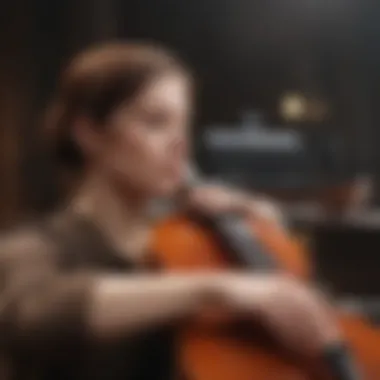
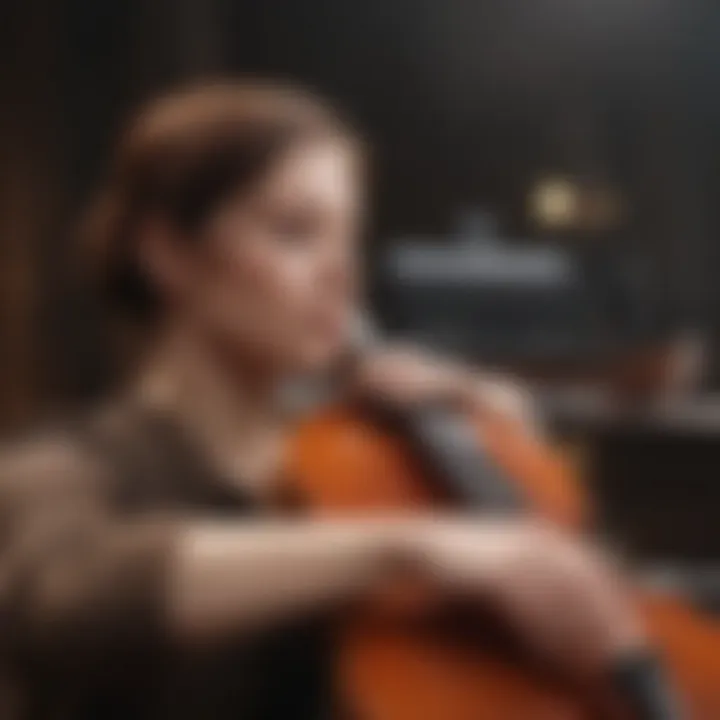
Changing Listener Preferences
Decline in traditional listening
Traditional methods of listening to classical radio are declining. This shift affects how audiences engage with music. Convenience is often cited as a reason for this change. Many people prefer on-demand streaming services. Traditional broadcasting lacks the flexibility that listeners desire. The decline in traditional listening highlights the need for adaptation. Stations must explore new strategies to retain their audience.
Rising interest in contemporary genres
Listeners today show increasing interest in updated or fusion styles. This trend broadens the musical landscape but also challenges classical music's relevance. The key characteristic of contemporary genres is their accessibility. Many people find classical music complex or elitist. Integrating contemporary sounds into classical programming may attract new listeners. This strategy has both benefits and disadvantages. Engaging with modern tastes may dilute the core essence of classical music.
Efforts to attract younger audiences
Efforts to draw in younger listeners are crucial for classical radio's survival. Engaging youth with innovative programming can change perceptions. Young audiences often seek authenticity and relatability in music. Tailoring content to meet these needs can help classical radio adapt. Additionally, interactive elements such as social media can shape connection. However, the challenge lies in balancing contemporary appeal and classical roots.
Budget Constraints
Funding models for public stations
Public radio stations often depend on funding models that may be outdated. Many rely heavily on listener donations. This funding uncertainty can limit programming possibilities. Exploring new funding models is necessary for sustainability. Grants and community-based partnerships offer potential support. However, diversifying income sources must align with programming values and listener expectations.
Impact of advertisements
The presence of advertisements in classical radio creates a fine balance. While advertising can generate revenue, it can also drive away dedicated listeners. Many classical music enthusiasts appreciate uninterrupted experiences. Introducing ads may disrupt this value. Still, strategic placements can enhance station funding while minimizing listener backlash. The key is finding the right balance.
Strategies for sustainability
Sustainable strategies are essential for classical radio's future. Implementing collaborative events with local organizations can enhance creativity. Public outreach programs, educational partnerships, and community involvement are beneficial. Involvement with schools and universities may nurture a new generation of listeners. However, all sustainable strategies require long-term commitment and adaptability.
"The challenges facing classical radio are not just about survival; they compel a reevaluation of how music is shared and experienced in today's culture."
The examination of these challenges will provide critical insights into how classical radio adapts to an evolving world.
The Future of Classical Radio in Boston
The future of classical radio in Boston represents a critical area of interest as it navigates through an evolving cultural and technological landscape. The increasing competition from various digital platforms poses significant challenges. However, with proper adaptation and innovation, classical radio can maintain its relevance while continuing to attract enthusiastic audiences. It is essential to examine the opportunities available for growth and sustainability in this unique musical genre.
Evolving Musical Landscapes
Integration of various genres
The integration of various genres into classical programming is becoming more commonplace. By blending classical music with elements of jazz, folk, and contemporary styles, radio stations can appeal to a broader audience. This approach not only makes classical music more accessible but also enriches the listening experience. The unique feature here is that it allows classical music enthusiasts to discover new connections while attracting those who may have previously felt indifferent toward the genre. This strategy promotes inclusivity, making classical radio more popular among diverse listener demographics.
Promotion of hybrid events
Hybrid events, which combine live performances with digital streaming, present an innovative way to engage audiences. These events can reach both local and global listeners. By merging in-person experiences with online access, stations can maximize their reach. The key characteristic of this approach is the versatility it offers. While it brings performers directly to the audience, it also serves to expand the participating listener base. However, significant logistical considerations are required to ensure a smooth integration of both formats. This approach can enhance the overall experience by making it more interactive and exciting to engage with classical music.
Resilience through collaboration
Collaboration among institutions, such as local orchestras, universities, and community organizations, plays a vital role in sustaining classical radio. By combining resources and expertise, these partnerships can create enriching programming and outreach opportunities. The key characteristic of resilience through collaboration is the pooling of knowledge and talent, which strengthens the overall musical landscape. This synergy can foster innovation and ensure the survival of classical music by connecting with a broader audience. However, it is crucial to navigate the complexities of these relationships carefully, as diverging interests may occasionally complicate partnerships.
Opportunities for Innovation
Embracing technological advances
Embracing technological advances is essential for the future of classical radio. The use of digital tools, like high-quality streaming services and interactive apps, enables stations to offer their content more effectively. This characteristic makes it a beneficial choice as it aligns with modern listening habits. The unique aspect of utilizing technology is how it improves accessibility, allowing classical music lovers to enjoy their favorite pieces anytime, anywhere. However, the challenge lies in ensuring that the quality of the content remains high even as it becomes widely available.
Expanding audience outreach
Expanding audience outreach is a critical strategy to keep classical radio relevant. Engaging with younger audiences through social media platforms, podcasts, and educational initiatives can help bridge the generation gap. The key characteristic here is adaptability; being able to cater to the interests of varying demographic groups enhances potential engagement. This effort can foster a deeper appreciation for classical music among all age groups. Yet, it is essential to ensure that the core values and the integrity of classical music are preserved.
Leveraging educational partnerships
Leveraging educational partnerships can be a robust strategy for classical radio stations. Collaborating with local educational institutions can enrich programming and promote classical music to a younger audience. The key characteristic of these partnerships is mutual benefit; both parties can enhance their visibility and impact. Unique collaborative projects, such as workshops, student-led broadcasts, or thematic series, can create a dynamic platform for both budding musicians and seasoned professionals to share their craft. Nevertheless, challenges exist in aligning the goals of educational organizations with those of radio stations, which must be navigated thoughtfully.
End
The significance of classical radio in Boston extends far beyond the simple act of broadcasting music. It plays a pivotal role in nurturing a rich cultural atmosphere and preserving the heritage of classical music in a rapidly changing media landscape. The impact is multi-faceted, touching on areas such as education, community engagement, and the broader appreciation of classical compositions.
Significance of Classical Radio in Boston
Classical radio stations in Boston, such as WCRB and WBUR, are instrumental in introducing audiences to both traditional and contemporary works. They serve not only as platforms for established masterpieces but also as venues for emerging composers and local talent. This presents listeners with a diverse range of programming that reflects both historical significance and present-day relevance.
Moreover, classical radio provides educational resources that benefit music students and enthusiasts. Many stations offer insightful commentary on pieces, artist interviews, and features on composers that enhance listeners' understanding. This educational aspect helps cultivate a more knowledgeable audience, promoting a deeper appreciation for classical music.
Final Thoughts and Encouragement for Engagement
As the future of classical radio in Boston unfolds, engaging with these platforms is crucial. Supporting local stations through listenership, donations, and participation in community events helps ensure their survival amidst digital competition. Exploring the rich landscape of classical music through these radio programs can enrich one’s life in many ways.
Listeners are encouraged to share feedback, participate in social media discussions, and support initiatives by these stations to foster a vibrant classical music community.
"The preservation and celebration of classical music through radio broadcasting is essential for future generations. Every listener plays a part in this cultural dialogue."
In essence, the future of classical radio is not only in the hands of broadcasters but also in the collective participation of its audience. Your engagement is vital.







